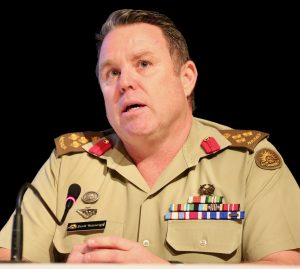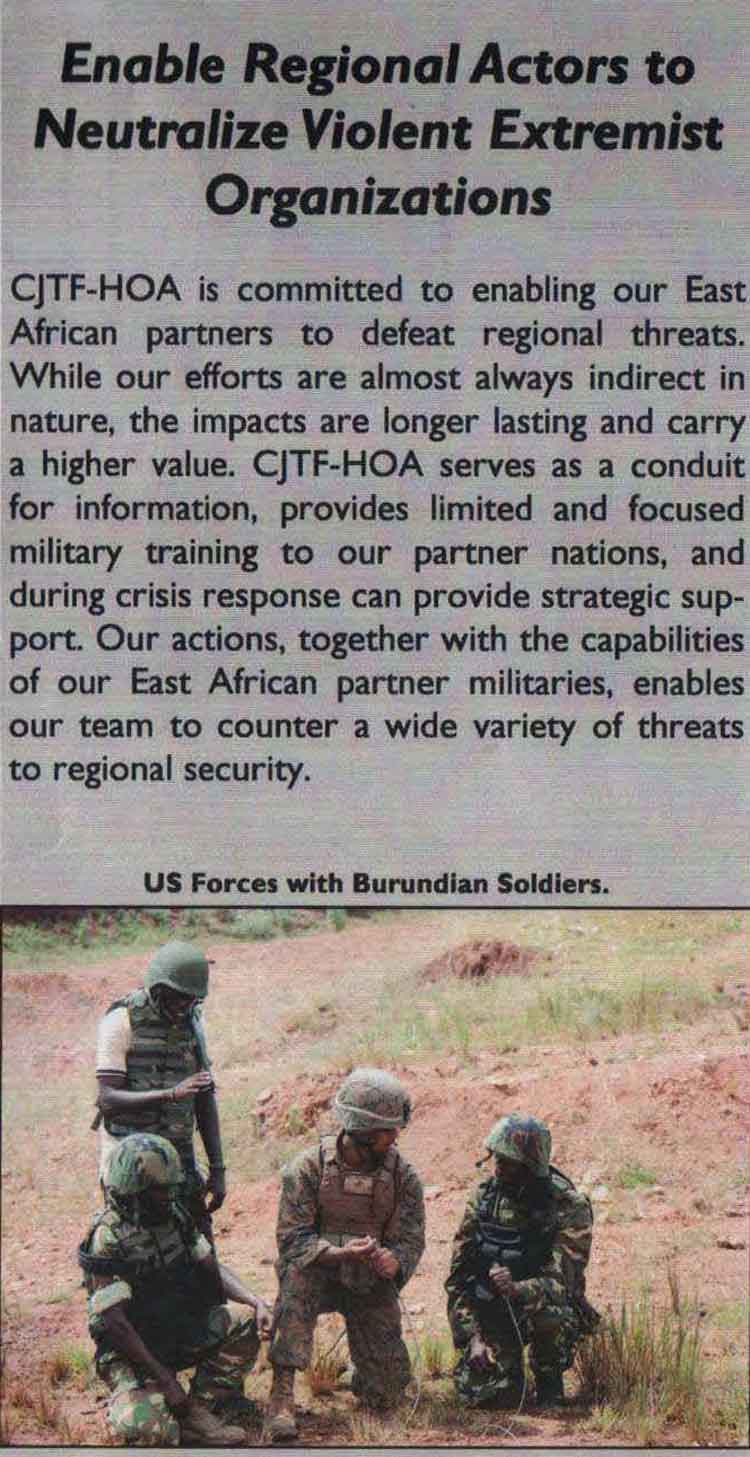2017-04-25 By Robbin Laird
The discussion of something like integrated force design can seem to be abstract and metaphysical and more of a seminar topic than an actual strategic effort by the ADF.
But it is not.
It is about ensuring that your warfighters are more lethal and survivable.
One is working to reduce fratricide, and a more capable and comprehensive use of combat resources at the point of attack.
At the Williams Foundation Seminar held on April 11, 2017, no presenter more effectively drove home the point than Brigadier General David Wainwright. He is Director General of Land Warfare in the Australian Army.
In his concluding slide he provided a series of caveats on force design and brought the audience back to the core point: “We can not forget that our young men and women will one day be stuck with our conclusions.”
 Slide from presentation by BG Wainwright, Williams Foundation, April 11, 2017
Slide from presentation by BG Wainwright, Williams Foundation, April 11, 2017
In an interview held later in that week at his office, it was clear why he focused so strongly on this point.
His own combat experiences in the Middle East and elsewhere underscored that getting your concept of operations right was crucial to combat success.
In particular, his experience in Afghanistan, which required evolving the concept of operations, was directly correlated with combat success. Having the right approach and the right command structure was an inherent part of success or failure.
This means for the future land force, that shaping an effective concept of operations as as part of an integrated joint force was not a word game, or a bureaucratic game, but fundamental to the combat success of the ADF.
As BG Wainwright put it during the interview: “Joint effect through integration by action is crucial.
“We need to frame any design the future force to achieve greater joint integrated effects respectfully across all warfighting domains.
“For me the key to this challenge rests in our people.
“Moreover I see that the younger generation are an critical component to this design, because they are pretty well joint educated, enabled and experienced.
“The questions is how can we maximize the future force to be built around those instincts and experiences?”
And the kind of joint effect he was focused upon was not only the ability to share common resources but to funnel those resources in terms of the kinds of decisions, which had to be made in the different warfighting domains.
“I don’t want a joint ISR program being developed in isolation at the operational level without a clear understanding of the ground force considerations.
“It’s dangerous for this to even be conceived as a notion. .”
He emphasized that the changing strategic environment was driving the need to reconsider some of our traditional models as we strive to design a capable responsive and empowered effective future integrated force.
“In the past decades, we have in many ways predominately fought wars of choice.
“Arguably, this luxury of choice will not necessarily continue.
“Increasingly, we see a higher probability of facing the possibility of wars of necessity and National Interests at threat.
“Moreover, the force must be response to new challenges that are not simple to define.
“From the impact of exploding urbanisation, severe demographic shifts, population growth and resource scarcity; to the barely glimpsed consequences of hyper connectivity and climate change.
“The way warfare will manifest in the future, the adversaries we may face and the means we will employ are impossible to fully prepare for
 Brigadier David Wainwright, Director General Land Warfare during a panel discussion at the Williams Foundation seminar on integrated force design, April 11, 2017.
Brigadier David Wainwright, Director General Land Warfare during a panel discussion at the Williams Foundation seminar on integrated force design, April 11, 2017.
“The land Force component will continue to play a vital role in response to these challenges.
“As such Australia must continue to invest in a highly capable ground force integrated into the joint force.
“We need to get this design right; as failure to adequately prepare the force is not an option.”
The fluid nature of the 21st century battlespace means as well that operations in one domain need to be informed by and to inform the other warfighting domains.
In effect, either you integrate or get in each others ways with very negative perhaps even disastrous effects.
In other words, joint warfighting is necessary not just to enhance combat effectiveness but to avoid the kind of entropy which conflicting elements of a network force could create by cross-cutting each other in quite a literal sense.
He argued that with the new technologies, more combat power can be concentrated on smaller combat units.
And C2 combined with empowering the way we will fight needs to be pushed to those units enabling them to be more lethal and survivable.
There can be little doubt that technology is changing the character of the contemporary military problem, suggesting not simply technological solutions but the need for innovative operational concepts across all the domains – simultaneously.
The force designers of today must navigate this complexity to provide tomorrow’s policy makers and joint task force commander’s robust, capable and responsive options for a tomorrow of contested domains, increased lethality and irreducible complexity.
And it is crucial as well to train for the future with significant uncertainty as a training framework.
Training with networks and without; training with GPS enabled systems and without; these are important training venues to ensure the kind of combat flexibility and skill sets which the Australian Army would need to exercise in 21st combat situations.
He had a healthy disregard for our capabilities to actually know in detail future war situations and conditions and argued for shaping solders to fight with confidence in uncertain combat situations.
In effect, he was arguing that the design of the integrated force needed to built around training of the soldiers, sailors and air men to be able to deal with disruptive change and combat learning on the fly in very dynamic combat situations.
His core sense of joint force design from the Army’s perspective was to deliver a set of outcomes for the ground maneuver forces.
These key outcomes were summarized in the following slide:
 Slide from presentation by BG Wainwright, Williams Foundation, April 11, 2017
Slide from presentation by BG Wainwright, Williams Foundation, April 11, 2017
Obviously, this is a very challenging set of outcomes to achieve.
But without setting out these targets, the point of joint force design would simply be lost and become a powerpoint bureaucratic exercise.
And for this senior officer, force design is not a word game; it is about ensuring the safety, survival and combat effectiveness of the Australian Defence Force.
And without integrated force design these objectives will be sub-optimized.
Put bluntly, if you do not design a force with joint effect as a key objective, you are putting your people at unnecessary risk and you will not train your people for success in the evolving 21st century context of combat operations.
BG Wainwright concluded his presentation with the following key points which provide an important reality check on force structure design for 21st century combat forces.
A future force design that has become obsessively reliant on an assumption of ‘seamless integration’ and ‘decision superiority’ fed by vast quantities of fused data and enabled by reach back and just in time sustainment – leaves itself vulnerable to isolation, its responses incoherent and its forces prey to operational shock – and worse defeat in detail.
For the future junior commanders and their young men and women we simply cannot afford to allow this thinking to consume common sense – thinking that is at odds with war’s enduring nature.
We must be wary of an over reliance on exquisite strategic command, control and communications infrastructure – can we really assure access? Can we guarantee trusted data free from manipulation? What will be the real costs and vulnerabilities of degraded networks through to simultaneously contested domains.
Which leads me to a fundamental design characteristic, not simply for future land forces – but for the joint force as a whole – the master principle of resilience, or further what scholar Nassim Nicholas Taleb would describe as Anti-Fragility – the capacity to thrive in uncertainty and chaos – indeed not just survive, but to flourish.
Resilience in a system will mean different things to different partners within a joint force, but will serve us well as a principle for the design of an integrated Objective Force that is preparing for a future of contested domains and degraded networks – and for the tactical commanders and their soldiers in harm’s way it is the minimum of what they will expect the Objective Force to be capable of delivering.
This begs the question for this forum – as we seek to design a fully integrated joint force, capable of effective interoperability – how do we build, from first principles – our network interconnections to be as resilient and adaptive as possible? We simply cannot afford to find the connections between our sensors and weapons severed, or our networks compromised. Force design is not simply a method to best focus investment, or prevent expensive after market integration efforts – it serves as the key to building a truly Joint Force by Design.


